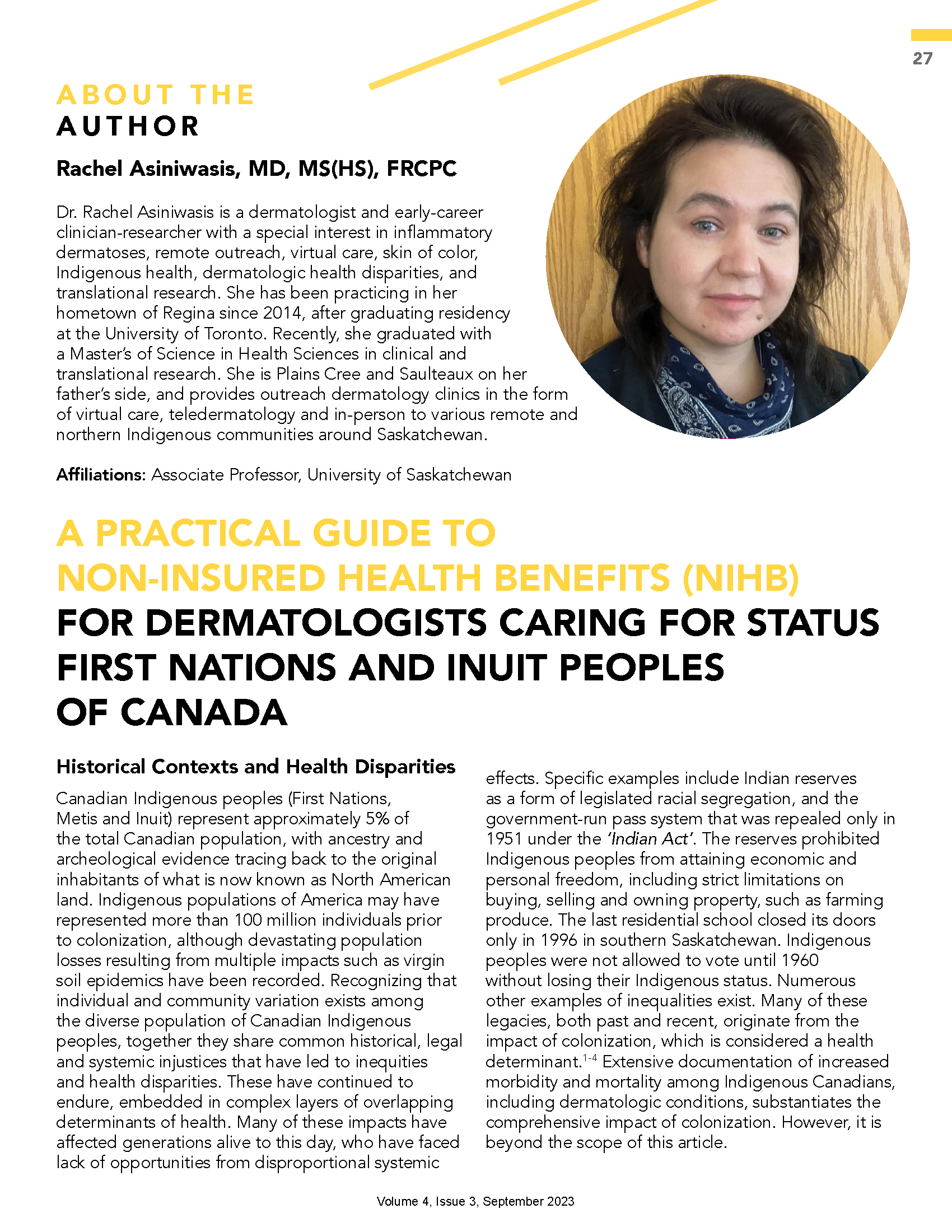A Practical Guide to Non-insured Health Benefits (NIHB) for Dermatologists Caring for Status First Nations and Inuit Peoples of Canada
Abstract
Canadian Indigenous peoples (First Nations, Metis and Inuit) represent approximately 5% of the total Canadian population, with ancestry and archeological evidence tracing back to the original inhabitants of what is now known as North American land. Indigenous populations of America may have represented more than 100 million individuals prior to colonization, although devastating population losses resulting from multiple impacts such as virgin soil epidemics have been recorded. Recognizing that individual and community variation exists among the diverse population of Canadian Indigenous peoples, together they share common historical, legal and systemic injustices that have led to inequities and health disparities. These have continued to endure, embedded in complex layers of overlapping determinants of health. Many of these impacts have affected generations alive to this day, who have faced lack of opportunities from disproportional systemic effects. Specific examples include Indian reserves as a form of legislated racial segregation, and the government-run pass system that was repealed only in 1951 under the ‘Indian Act’. The reserves prohibited Indigenous peoples from attaining economic and personal freedom, including strict limitations on buying, selling and owning property, such as farming produce. The last residential school closed its doors only in 1996 in southern Saskatchewan. Indigenous peoples were not allowed to vote until 1960 without losing their Indigenous status. Numerous other examples of inequalities exist. Many of these legacies, both past and recent, originate from the impact of colonization, which is considered a health determinant.1-4 Extensive documentation of increased morbidity and mortality among Indigenous Canadians, including dermatologic conditions, substantiates the comprehensive impact of colonization. However, it is beyond the scope of this article.
References
Allan B, Smylie J. First Peoples, Second Class Treatment: The Role of Racism in the Health and Well-being of Indigenous Peoples in Canada. Toronto (ON): the Wellesley Institute; 2015.
Waldram J, Herring D, Ann Y, et al. Aboriginal Health in Canada: Historical, Cultural and Epidemiological Perspectives. 2nd ed. Toronto (ON): University of Toronto Press; 2006.
Setting the Context: An Overview of Aboriginal Health in Canada [fact sheet]. Prince George, (BC): National Collaborating Centre for Aboriginal Health; 2013.
CBC News. First Nations Right to Vote Granted 50 Years Ago. CBC News Canada North. 2010 Jul 1. Available from: https://www.cbc.ca/news/canada/north/first-nations-right-to-vote-granted-50-years-ago-1.899354.
Craft A, Lebihan A. The Treaty Right to Health: A Sacred Obligation. Prince George (BC): National Collaborating Centre for Indigenous Health; 2021. Available from: https://www.nccih.ca/Publications/Lists/Publications/Attachments/10361/Treaty-Right-to-Health_EN_Web_2021-02-02.pdf.
Non-Insured Health Benefits: Drug Benefit List. Department of Indigenous Services Canada, First Nations and Inuit Health Branch. 2020 Sept. Available from: https://www.sac-isc.gc.ca/eng/1572888328565/1572888420703.
Indigenous Services Canada Non-Insured Health Benefits Program. Online NIHB Drug Benefit List. Express Scripts Canada. Available from: https://nihb-ssna.express-scripts.ca/en/040212.


